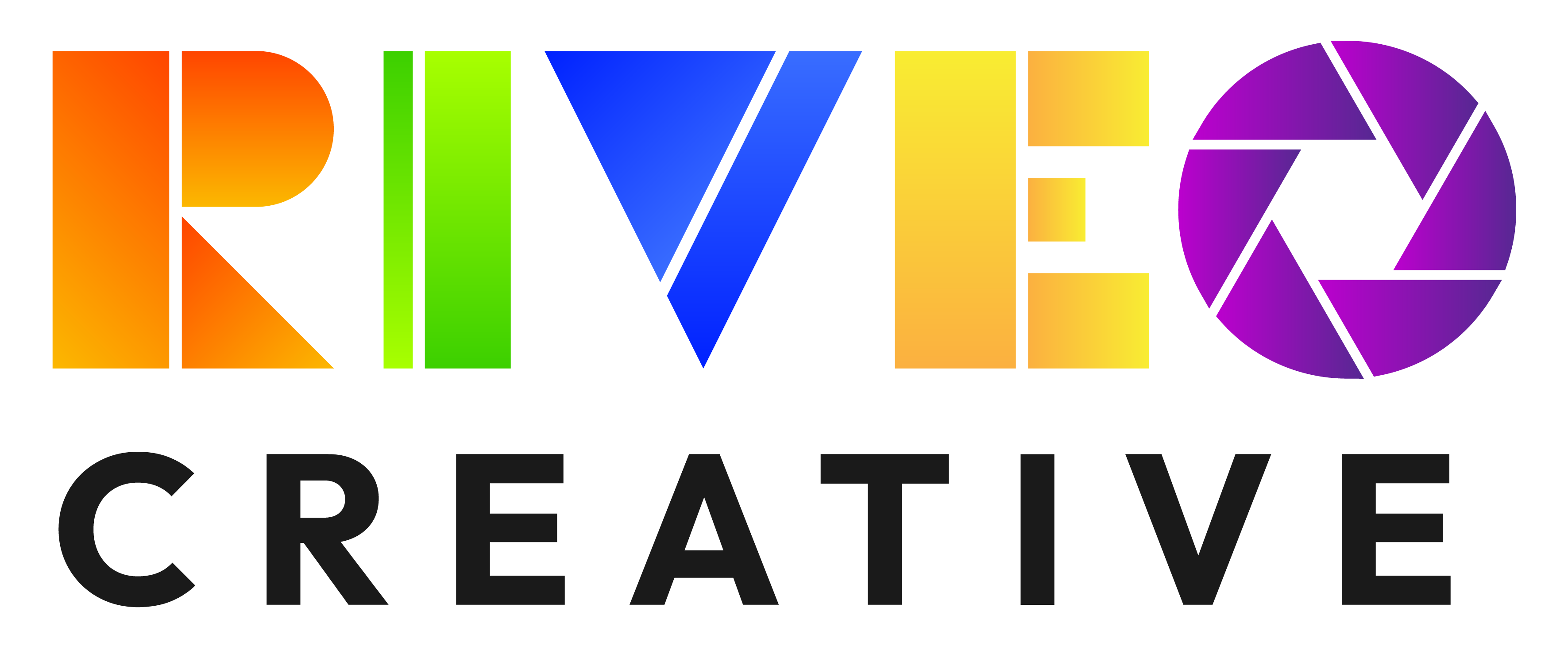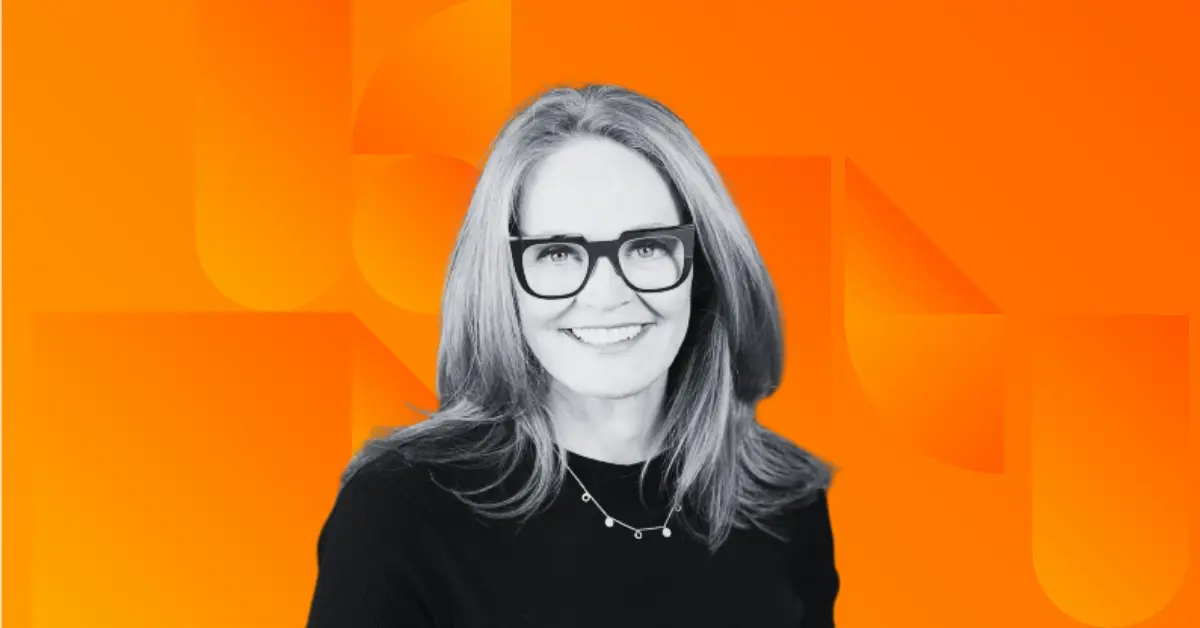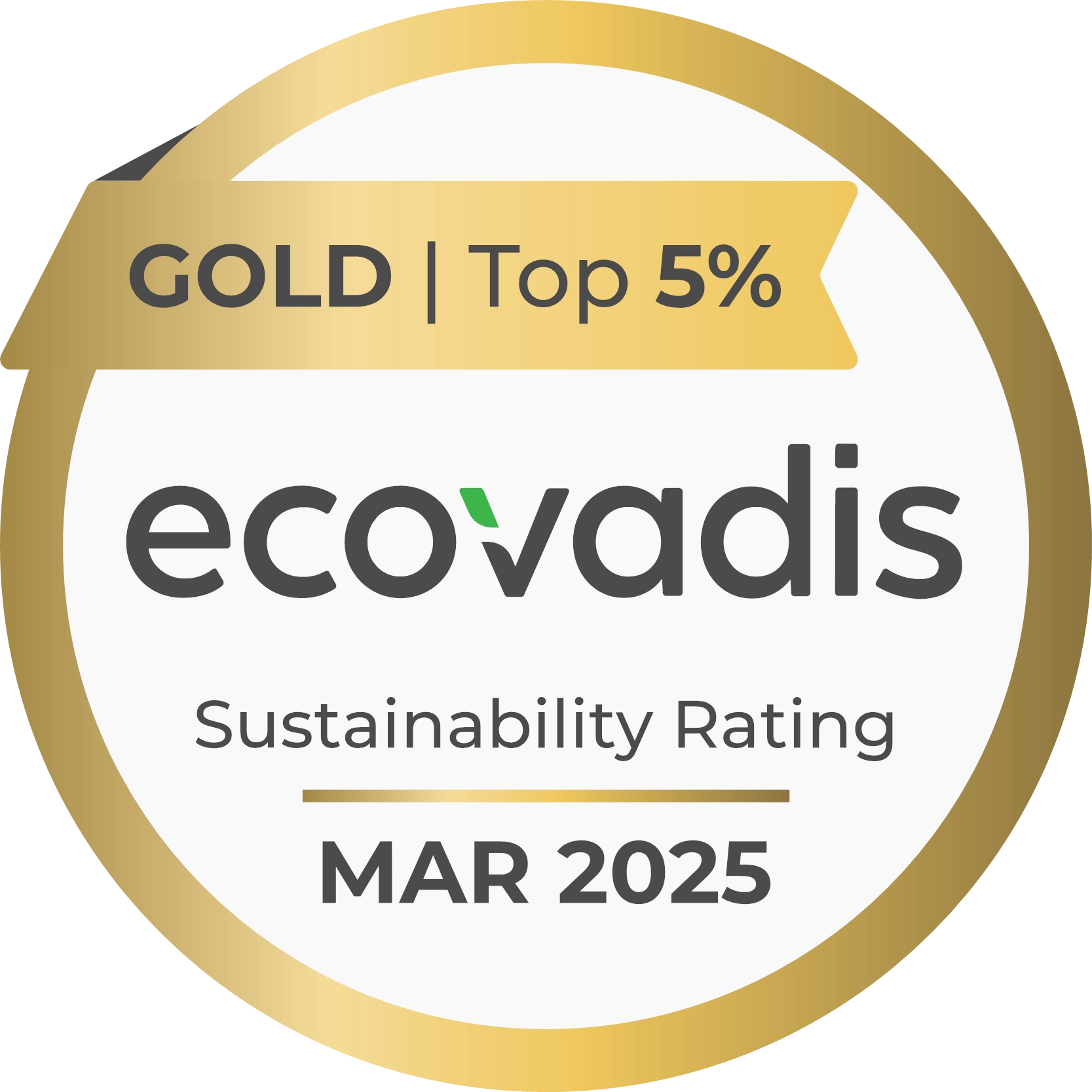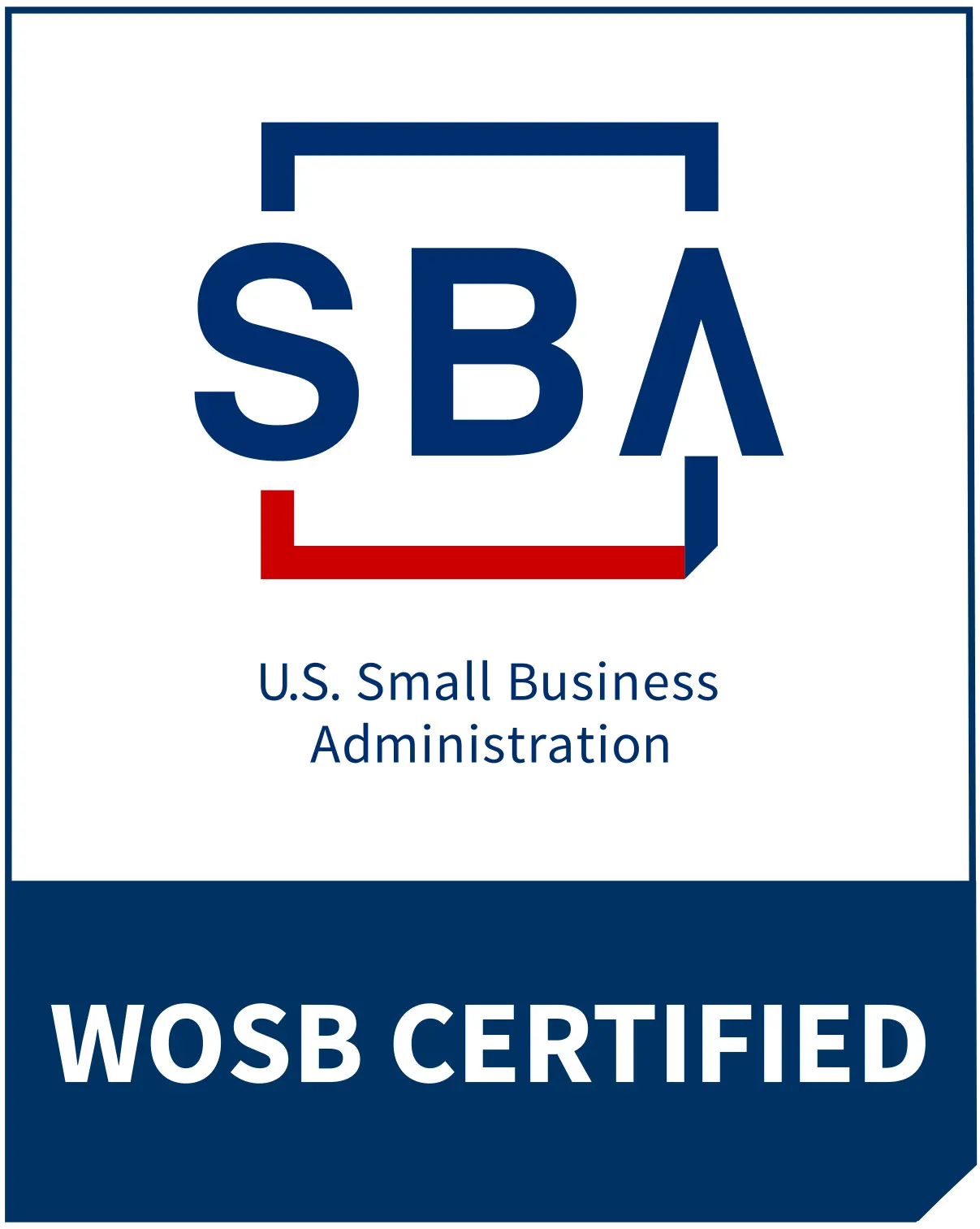“In today’s fast-paced and evolving creative marketing industry, there can be many creators, from influencers to Super Bowl creators, directors, you know, of all different levels, using a variety of approaches to produce content…And it’s more important than ever for marketers to have a better understanding of this type of investment, the risks, taking more control of the management of content creation, and delivering great creative work efficiently and effectively.” The Marketer’s Guide to Creative Production by Jillian Gibbs
In this episode of Amplify, Riveo’s CEO Elin Barton talks with Jillian Gibbs about breaking down silos, sustainability, the importance of quality content, adapting to industry changes, and Jillian’s new book!
Jillian is the founder and global CEO of Advertising Production Resources (APR) Consulting, the world’s largest and fastest growing production consultancy with over 150+ people in 50+ countries. APR Consulting helps marketers to optimize their content creation ecosystem by providing services such as production consulting, cost controlling, vendor selection, and quality assurance.
Time Stamps:
00:31 How Jillian Got Started
01:53 Bringing Personal Creativity into the Workplace
04:46 How to See the Forest Through the Trees (Seeing the Big Picture)
07:10 Sustainability in Video Production
09:44 How Important is Quality?
14:07 How to Determine the Level of Quality Needed
15:37 What Mistakes Do Clients Make?
18:18 The Past and Future of Marketing
20:49 Helping Change Not Be So Scary
23:16 Jillian’s Book, The Marketer’s Guide to Creative Production
24:57 The Book for Pros, Juniors, and Everyone In Between
27:32 Jillian’s Reason for Writing the Book
30:19 Be Respectful of Others During Production
31:54 Where to Find the Book
Full Transcript:
Elin Barton 00:04
Hello, and welcome to Amplify, the video series where we interview thought leaders about best practices, trends and their experiences in creating engaging campaigns. Today I’m speaking with Jillian Gibbs, CEO of APR. Welcome to Amplify, Jillian.
Jillian Gibbs 00:22
Thank you, Elin. It’s so great to be here.
Elin Barton 00:25
I’m really excited to talk to you. I have so many questions for you. And I’m just gonna dive right in here. So your company APR was designed to help marketers make the best, most informed decisions regarding their like the creative production process. And you use terms like production partner, executive producer. For you personally, what kind of led you to this work and your approach to this work?
Jillian Gibbs 00:56
For me, the origins of my interest in my passion for this came when I was I was studying music at Ithaca College and performing in different types of venues like off Broadway and on cruise ships and in New York City cabarets, and I had a minor in advertising. And when I started a full time job, I started at ad agencies, and then I was quickly hired over to Unilever. And I became obsessed with breaking down the silos and building bridges between the stakeholders. And the value I think, is in knowing how to interpret what the marketer wants, and what the agency is saying, and what the production company is delivering. That’s the talent, right? And I put that into a business. That’s what we do.
Elin Barton 01:46
That’s really amazing. And it’s interesting that you come from that creative background. I was just talking to someone yesterday who used to be a professional singer. And when she switched gears into a more like, quote, unquote, serious job, she has, she’s kind of squashed that side of her, and just ignored it. And now years later, that now that she started five company, she’s super successful, but she’s like, she’s like, “This creativity. It’s just, it just wants to come out.” Have you found a balance there with your own personal creativity?
Jillian Gibbs 02:26
Yes. I studied with Joanna Gleason who was one of my teachers in New York. And I don’t know if you know who that is; redheaded, famous Broadway singer, did a lot of Stephen Sondheim work. And she said, we were all in her class, there’s 12 of us. And she’s put her hand on my shoulder one day after I sang Somewhere Over the Rainbow to the group. And all of the other people, the 11 other people were singing on Broadway. And I was not. I was working at Unilever. But I was auditioning, and I was still playing with music. She put her hand on my shoulder after I sang that. And it was, it made everybody in the room cry. And she said to me and to the group, “If there is anything else in your life that you can be passionate about, go do that. Because this, you know, theater career is very, very, very hard.” And she looked at me, she said, “You’re a triple threat, you can do it, you can sing, you can dance, you can act.” And I was like, oh my god, that was just like a big sort of eye opener for me, because I thought, I can be a business leader and use my creativity in ways that stand out that become unique, right. And so when I talk to people, they, when I interview people, when clients are interviewing us, they feel the passion coming from me, because I understand how to how to convey that how to give that as a gift as a singer, and I just use that when I’m talking to clients and talking to people that are joining the company. And it seems to really bring, just level up the experience for people that I’m talking with. So that creativity comes out. And I’ll sing every now and then, I’ll do a little song. And, and I definitely like have found ways to sing locally. Or when I’m traveling, I have a place in New York that I sing at and a place in Denver that I sing at. And so and I’ve, I’ve bought a karaoke machine. So now in my new neighborhood, which is, I live near Aspen, Colorado, and people come over and we sing in the yard. The police come and have us stop, stop making too much noise. And I’ve got these 70 and 80 year old people in my yard singing karaoke. So I do sing. And I do think, I do think the creativity that we have in us can contribute to the businesses and to the business experience.
Elin Barton 04:37
Well, I think that’s really the best scenario is when we’re able to do that and bring that into our work, you know, and serve in that way. So it’s really exciting to hear you say that. Getting back to your company, you know, I’m really interested in, you’ve built this amazing company. And, you know, it’s not just creativity, it’s business acumen and you’ve put together a wonderful team. So one of the things. And we’re in a similar business and I, so I know this, that one of the things that people often struggle with is, you know, seeing the forest through the trees, getting to that bird’s eye view, the big picture, what they’re trying to do, and we’re continually sort of pulling people in that direction, but it’s not always easy. So I’m kind of curious to hear how you guys have solved this puzzle.
Jillian Gibbs 05:27
The bird’s eye view, is the advantage that we have, right. So, you know, as a, as a production service company, you only see the work that you’re assigned. Right? And because of that, you know, most marketing organizations are assigning work in what I call it silos, right? To every creative agency, experiential, digital, social agency, gaming agency, you know, there’s so many different types of agencies, there’s so many different types of production service companies like yours, that rarely do the creative agencies and the production service companies see each other scopes, like, almost never. So what we help to do is we’re in a unique position that that that we sit in, which is at the ecosystem level, we can, if you think about it, we can we have visibility to all the activity, all the production activity. And so the value that we bring is far beyond the individual project, it’s at the ecosystem level, at the bird’s eye view, as you say, you know. Our advisors work at the project level, but we, as a company, see everything at the ecosystem level. So what that means is, we can say, “Oh, that asset was already shot by such and such, you know, we know where to find it, let’s bring it to the table, you don’t have to reshoot that.” Or if you are, if you are shooting something that someone else can use, you know, we sit at this coordination between the stakeholders level, that is just, its value, value that is just beyond cost controlling or cost consulting. It’s, it’s truly the executive producer type role, like sitting at the bird’s eye level. Does that make sense?
Elin Barton 07:09
It, you know, it makes sense. And it makes me think about a hot topic that we all hear about talk about care about these days, which is sustainability and being efficient in that way. Why go out and shoot that, you know, element, again, when you already have it. So it’s, you know, it’s just, it’s knowing that. That’s a, it’s even more critically important now than ever before, I think.
Jillian Gibbs 07:33
It is. Sustainability, it has become. I was at the Advertising Festival at Cannes, in France, in late June. And the two hot topics were sustainability. Well, there are three really, sustainability, diversity, and AI, and. But but to sustainability, on its own, because all three are very important and influencing the creative production processes, you know, sustainability is something that we can do now for the industry. And there are a list of best practices that we put, we just put together. On September 18, there, the UN, the United Nations has an initiative called New Zero World, and it is focusing on the entertainment industry, including the advertising industry, on how we as industry professionals can work smarter and better to nurture the planet while we’re shooting. I mean, we typically, we don’t have any issues, people in production getting on a plane, “I’ll be there, you know, let’s just fly, let’s just go.” And that is costly, not just from an expense standpoint, but from the wear and tear that it puts on the planet, affecting the carbon footprint. So there’s, there’s ways we can manage that now. During COVID, we got used to dialing in and doing a virtual video village. And we got used to accepting the fact that we can’t be in certain places, but the shoot must go on. So those, those practices that we’ve learned to trust, have more confidence in can now be introduced to expand our sustainability initiatives. So on September 18, there is a best practice document or a white paper that’s coming out of which we, APR, are a part of, that the UN will be, will share, will be sharing. And what they’ve done is they’ve hired New Zero World to create a an advertising campaign around saving the planet in the entertainment industry. So it’s a huge initiative that I’m glad you brought that up because there’s something we can all be doing. And I’ll be sharing that white paper on September 18.
Elin Barton 09:45
So besides sustainability, another interesting thing about where we’re at today in the world of advertising and production and all that has to do with quality. And you said that during COVID, people got used to a certain way of communication. They also got used to a certain level of quality or lack thereof, in some production. And personally, I do think there’s a place for different levels of production. But there’s also standards that companies need to be aware of when they’re representing their brand. I’d love to hear your thoughts on this.
Jillian Gibbs 10:26
I would say that the, quality is important. It is subjective what quality is, right? I had a client, just tell me, “I want some more pizzazz in that.” And I was like, “What is your definition of pizzazz?” But I think consumers are very savvy to the types of quality you know, that comes from producing on a cell phone, could be motion picture, you feature film quality. I think it’s a stylistic thing now. And I think there’s so much quantent, content, quantent is a new word I coined. I think there’s so much content, that the the quality will make a difference. But you don’t want it to feel like it’s being advertising, right? The consumer doesn’t want to be spoken at; they want to be joining a conversation that they’re, that that’s important to them, they want to work or buy from brands that are doing things that are important to them, you know, regarding some very important ESG initiatives in the environment, in social and governance. There are different levels of quality required for different types of production, like, you just need to get, you have to make sure that the juice is worth the squeeze, right. So you don’t want to spend $400,000 on a video that you’re gonna put on social media for three weeks. You have to look at really the the media and the weight that you’re putting into the media to determine is the juice worth the squeeze of the of what you’re investing in the content that you’re creating. And that’s what my company does is it helps the marketer to determine is the juice worth the squeeze? Should they be spending that much to produce that? And are there other ways to produce it to make the juice worth the squeeze? You know, and there’s a lot of content that’s produced that’s wasted. Right? Wouldn’t you say? Like, we’ve gotten into a habit in the, in the production industry of over producing, producing more than we need, because we want to create options and we want to be ready if we learned something in the marketplace that might inform us, that then requires a different type of edit or revision. So you over produce to accommodate that. Those, in those examples, over producing is fine. But to be honest, we’re often over producing because we don’t have the media plan. We don’t know what, how we’re going to be using the content. And so it happens across marketing organizations across the globe, that they’re producing more content, because they’re not sure what the end use is. And so if we could get ahead of that, there’ll be a lot less production wasted, and a lot more value put into the marketing production investment.
Elin Barton 13:15
Yeah, that’s a really good way to put it. And I love that term, is the juice worth the squeeze? That’s a great way, that’s a great way to put it. And I do think that there’s a lot of subtleties these days. Because even when you’re producing content that’s authentic, and inviting people into the conversation, there’s still, the quality, the audio can’t be horrible. The quality can’t be bad, there’s a balance of having it be authentic, and acceptable. And representative of the brand. And, you know, because people make even if it’s subliminal and subtle, you can make assumptions about brands that try to cheap out on quality and not pay attention.
Jillian Gibbs 14:01
Well, how do you? Can I ask you a question?
Elin Barton 14:04
Sure.
Jillian Gibbs 14:04
How do you, how do you manage that? You know, when you’re working with a client? How do you determine the level of quality they need?
Elin Barton 14:12
Yeah, it’s, it can be a challenge. And I think it comes down to really understanding the usage of the content they’re creating, the purpose of the content they’re creating, the audience. There is a certain baseline. Like we work with a lot of colleges. And so during some campaigns, they’ve wanted to use cell phone footage that students are shooting in a dorm room or in places that, you know, if you bring a film crew in, you’re gonna get different reactions than if it’s just students who are tasked with, you know, shooting content that’s real and authentic. Yet still, it’s problematic when the audio is really bad. You know, if the student’s trying to do a stand up during a career fair, and you can’t hear them, that’s a quality that is not acceptable. We help our clients reach success through thinking it through, giving them the tools, you know, understanding how we’re shooting it, why we’re shooting it, and what do we need? What resources do we need to achieve that. But it’s, it can be, it can be a real balancing act sometimes. We try to be a trusted guide. So, you know, we will work with them. But there’s a baseline. I want to ask you about when you go in. So one of the things that you guys do is you go in, and you’ll audit a client, I assume a new client’s marketing, how they’re doing their marketing, what’s good, what’s bad, what’s needed, all of that. What are some of the common mistakes that you tend to find when you do such a such a thing?
Jillian Gibbs 15:59
Some of, some of the common, I guess, mistakes that we find, or just opportunities really, right, because so many clients, it depends on the category, it depends on the maturity of their organization. It depends on the timing of our audit or the assessment. Like companies are still acting in a traditional way, for the most part. They still, many companies, not all companies, but they still think about their TV ads first. And so it’s, it’s just a part of the transformation, you know, that they’re all going through to be more digitally minded or digitally focused in how they think about their campaigns or their brand stories. The other area is in how to support creative agencies and production service companies in their success. So I’ve been saying for like, six or seven years that the industry is changing, you know, we need to help the people, we need to help the people to evolve. And so we have to invest in the people. And a lot of times because an organization has reduced their budgets, either internally on their training and development, their learning in development budgets have gone away, or their agencies fees have gone down, that the agencies have eliminated their mentorship and coaching and training budgets as well. And so that has been happening for about 10 years. And what we’re seeing now is a whole generation of people who need training. And so, in the, in the audit, in the assessment, we see people who are eagerly trying to adapt and support clients, whether they’re internal at the client, or whether they’re external agencies, but who don’t have the time or the tools to do so. So that’s that reveals itself in the audit. The audit is so much more than what they’re spending. And it’s more about the approach that they’re taking, the ways they can evolve, the ways they can upskill their people. I think that’s critical today, as we look at these assessments in these audits.
Elin Barton 18:01
Yeah, that’s a great answer. You know, and I think that’s something that a lot of people wouldn’t even really consider is training those people and looking at those needs. So I appreciate that you take the time to go deeper and really look at what’s needed there. Okay, so Jillian, you’ve been in this business for a while. I’ve been in this business for a while. But I’d really love your take on this. How have you seen things evolving over the years? And where do you see it going? You know, there’s so many changes in the way we consume media now.
Jillian Gibbs 18:36
Yeah, I mean, I think this is the most exciting time to be in the industry. I mean, it’s, it’s truly incredible what’s happening now in the evolution. I mean, I’ll just rattle off a couple things I see just top mind is, I see what’s going to change and where it’s needing to change is breaking down the silos, right, between media, creative and production. They’ve always been separate. And I think bringing together the stakeholders in all these areas is really important going forward to support the modern marketer. I think the modern marketer needs to be empowered in their roles. Understanding they have the, the Bill of Rights is what I wrote in my new book, The Marketer’s Guide to Creative Production. The Bill of Rights says, you have the right to ask questions, you have the right to challenge the answers, you have the right to ask for alternatives. So I think the marketers will transform in empowering themselves. They certainly have a lot more accountability today and a lot more to navigate. And I think the third thing that is changing is the developing of production planning, bringing production up earlier in the marketing operations or marketing creative process, because production used to be the end of the supply chain so to speak, or the end of the. You know, you create the creative. Everything is happening. And then production gets involved. Nowadays, you need to have a production strategy and a content creation strategy around the ecosystem of suppliers that you use as a marketer, around the ways in which they work, around the governance around all of that. The transparency, the cost, and all that is included in that governance. But mostly, it’s the ways of working that need to evolve, that’ll help lead to better efficiencies. Costs are going up, you know, inflation is rising. The cost of labor has gone up. The cost of materials has gone up. And marketers need more content. So in order to manage the fact that they need more content, but they don’t usually have more budget, they just have to get smarter. And so that’s what I see changing is they’re actually stopping and paying attention to say, “Let’s plan better.”
Elin Barton 20:46
Hmm, yeah, that’s wonderful insight again. So we’re talking about all of this change, and all of these things that are happening, and it’s different than it used to be. That can be challenging for a lot of people to deal with any kind of change. But right now, it feels like things are happening very fast. And I wonder, as you bring your clients along, as you bring your team along, do you encounter from time to time resistance to change? And how do you deal with that?
Jillian Gibbs 21:16
Yeah, it’s, it used to be harder than it is today, because I think everyone, humans just in general, see the change, it’s just inevitable. And so more and more companies are leaning into the fact that they need to change. But one of the things that we helped them do is, because we have companies that are at different levels of change. And you have to crawl and then you have to walk, and then you, and then you can run. And I think it’s really important to set a multi year plan, usually a three to five year plan for how to change. This way, it doesn’t seem so overwhelming, that the change needs to happen right now. And the other thing that we do is in just in change management, when we’re working side by side with a marketing organization, we’re typically considered a member of their team. And so we’re there. We’re like the, I like to call it the production concierge, of, of, of advertising production. As a, as a concierge, you know, you go up to the concierge and say, “Well, where should I go for dinner? And what should I do?” And so we are, we are there to answer their questions. But mostly, we are there to guide them so that as they make decisions, they’re making informed decisions that they feel confident in. And we can also point out when they’re, when they’re kind of defaulting to what they knew, versus what they should be doing going forward. Like that’s, that’s a way we were trained, you know, 20 years ago, when we were, you know, in university. And as the industry has changed so much, those things we learned back then don’t work anymore. And we have to rethink the way that we show up. And we rethink the way we engage our partners, rethink the way we think about our campaigns.
Elin Barton 23:05
Change is inevitable, and it does feel like it’s happening very fast these days. But you’re right, you know, with a plan, we can all calm down. Just approach it systematically. That makes a lot of sense. So do you want to shift gears and talk about a big new thing for you, a big change, I guess, and your book, and you have this book that’s just come out. So tell us about the book.
Jillian Gibbs 23:30
Well, I would say this book has been the it’s been. I’ve been teaching for, I don’t know, long time, 30 years, to marketers how they can best contribute to the creative production process. Like this book doesn’t teach them how to be a producer. It teaches them how to be a great partner to their creative and production service companies. And it is part, it’s the official book of APR’s masterclass. But I would say you know, why now? This book, it’s the timing is so important. And I’m gonna read you something that I wrote in the book it says, “In today’s fast-paced and evolving creative marketing industry, there can be many creators, from influencers to Super Bowl creators, directors, you know, of all different levels, using a variety of approaches to produce content. Brands are producing documentaries today, films. And it’s more important than ever for marketers to have a better understanding of this type of investment, the risks, taking more control of the management of content creation, and delivering great creative work efficiently and effectively.” That’s what this book does. It solves for when a marketer gets involved in any type of film, video, photography production, how they can get the most out of it, and how their partners can give them what they need.
Elin Barton 24:58
So, so this book is for anybody in the field who wants to advance or come into the field? Is it also for people that are entering the workforce?
Jillian Gibbs 25:09
Yes. So important. I was just talking to someone who, on my team, he came from Mercedes. And he was a digital marketing lead for a long time at Mercedes in which he was promoted to General Manager and was responsible for all the advertising and the events and everything. And he said, if he had had this book, when he moved from being digital into covering the traditional or the film and photography production, he would have, he would have accelerated much faster. He said, this is a this is a godsend. This is something that everyone is going to need, whether you’re a senior, whether you’re a junior, whether you’re just entering the industry. If I could share this, I was talking to a professor at NYU film school. He was one of the people who I gave a pre read to the book. And he said, when the film school students graduate, and they’re placed in jobs at an advertising agency, or at a production company, who works in the advertising industry, or on the client side (because, you know, clients have in house studios now), they are not taken on the journey to transition them from film school to the business world, in the advertising space. And if they read this book, that would be super helpful for them. If they took the masterclass, they would understand that, you know, in film school, you learn how to be a director, right? Well, when you’re in the advertising industry, you’re not, you’re relying on someone else to write the script, someone else to develop the strategy, right, and a producer to pull it all together. You’re just the director in the advertising industry, right? You don’t get to be involved in all those other areas for the most part. And so there’s just a different way of working. So I think anyone in marketing, marketing procurement, business affairs, marketing operations, creative operations, advertising agency, even production side, to understand what the clients are going through, I think this will help all sides of the industry.
Elin Barton 27:07
Now, that sounds amazing, I can tell you from running my production company, and having, we love to bring young people in, we love to bring in interns and and train people up. But there is a big disconnect, from what I’ve seen, of people coming out of college and being ready to jump in, you know, and work with a company like ours. So I can’t wait to see the book. What, what was the process like writing it? Did it take you a long time to, like conceive of it and put it together? Or was it real quick for you?
Jillian Gibbs 27:42
Well, it was based on this training that I’ve been doing for years. In about in 2016, I decided to put it in a book, I thought it would be a great tool for us as a company, for our clients, and, and for their agencies and the production companies related to the, you know, working with the clients. And so put it in book form in 2016. And I was so busy, you know that it just kind of, I tabled it then COVID hit and 2020. And in 2022, I decided to brush it off and just finish it and just get it out there because of this great need to educate the, it just became more important. Like, you know, timing is everything. And so I was like we gotta get this done. And so in October of last year, I started that process, finished the edits, hired a publishing company. And what do you know, but that process took up until August, where you know, I finally have this version in my hands. I thought I’d be done in like, by January, then it was May, then it was June. And here we are, finally finished. So the process took a lot longer because the, this book has illustrations in it. It has some business graphs and charts. And the formatting of the book was really important because it was more than just words. So that took a little longer. And the book is an eight and a half by eight and a half books. So it’s, it stays open. So it can be used in the masterclass as a workbook. So there’s, kind of had to think through all of that. So I am delighted that it’s done and I can’t wait to get it in everybody’s hands.
Elin Barton 29:18
Oh, congratulations. Is there a digital version? Or is it just print?
Jillian Gibbs 29:23
Of course it’s sustainable to have a digital version. There’ll be different languages of the book in 2024. There’ll be an audio version in 2024. Right now, there’s a bunch of book launch events going on. There’s one at Constellation Brands in Chicago, September 25. L’Oreal is hosting and what they’re doing is they’re saying let’s bring our marketers together. And let’s talk to them about the nuances of creative production in the beauty category and then give away the book as a free item and I just love that idea. You know? It’s, it’s it’s not really about the book. It’s about helping educate and you know, upskill people in the industry using the book.
Elin Barton 30:07
That’s wonderful. And I’m sure that the, I haven’t seen the book, but I’m sure it brings up a lot of things that most people have never even thought about, you know, like you said questions to ask, and just, maybe it’s a vehicle that helps see the big picture.
Jillian Gibbs 30:20
Yeah. And there’s a section in there, you might be happy to hear this, Elin, that talks about, you know, our industry, the creative production industry is made up of small businesses. It’s made up of people like you, who work really, really hard, who upskill and bring in young people and, and are investing in the people that you work with. And we, the advertiser who’s paying, you know, for these productions to happen, really needs to be aware of the, of how things like their corporate payment terms, affect a production. Agencies have always been sort of the filter between the advertiser or the marketing organization and the production suppliers. But now that marketers are working directly with production suppliers, they, this filter is no longer there. And that filter protected the small businesses from these payment terms in the end. I mean, which could be is, as little as you know, we have one client who pays us in 10 days, which is amazing, because we’re a minority-owned business. But most companies pay between 30 and 60 days. There are some that pay 90 days out and pay 120 days out. So the small businesses can’t afford to work if they’re getting paid four months after they do the work, right. And there are certain labor union rules that require you as a production supplier to pay your crew and your talent within 10 days. So you have to like, lay out that.
Elin Barton 31:45
Oh, yeah. Hallelujah. Thank you for including that part.
Jillian Gibbs 31:49
Yes. I mean, so if we educate, then we then, we can make a difference, right?
Elin Barton 31:54
Yes. Thank you. Can you tell us where we can find the book?
Jillian Gibbs 31:58
Yes, you can find it on Amazon. Just search on Jillian Gibbs. And you’ll see The Marketer’s Guide to Creative Production. We also have a website, just go to creativeproductionformarketers.com, creativeproductionformarketers.com. And you’ll see more information about the book.
Elin Barton 32:15
Thank you, Jillian for sharing all that information. I can’t wait to pick up the book and dig in. It has been a great pleasure talking with you today. I look forward to next time and thank you for being a guest on Amplify.
Jillian Gibbs 32:27
Absolutely wonderful. Great to see you again.
